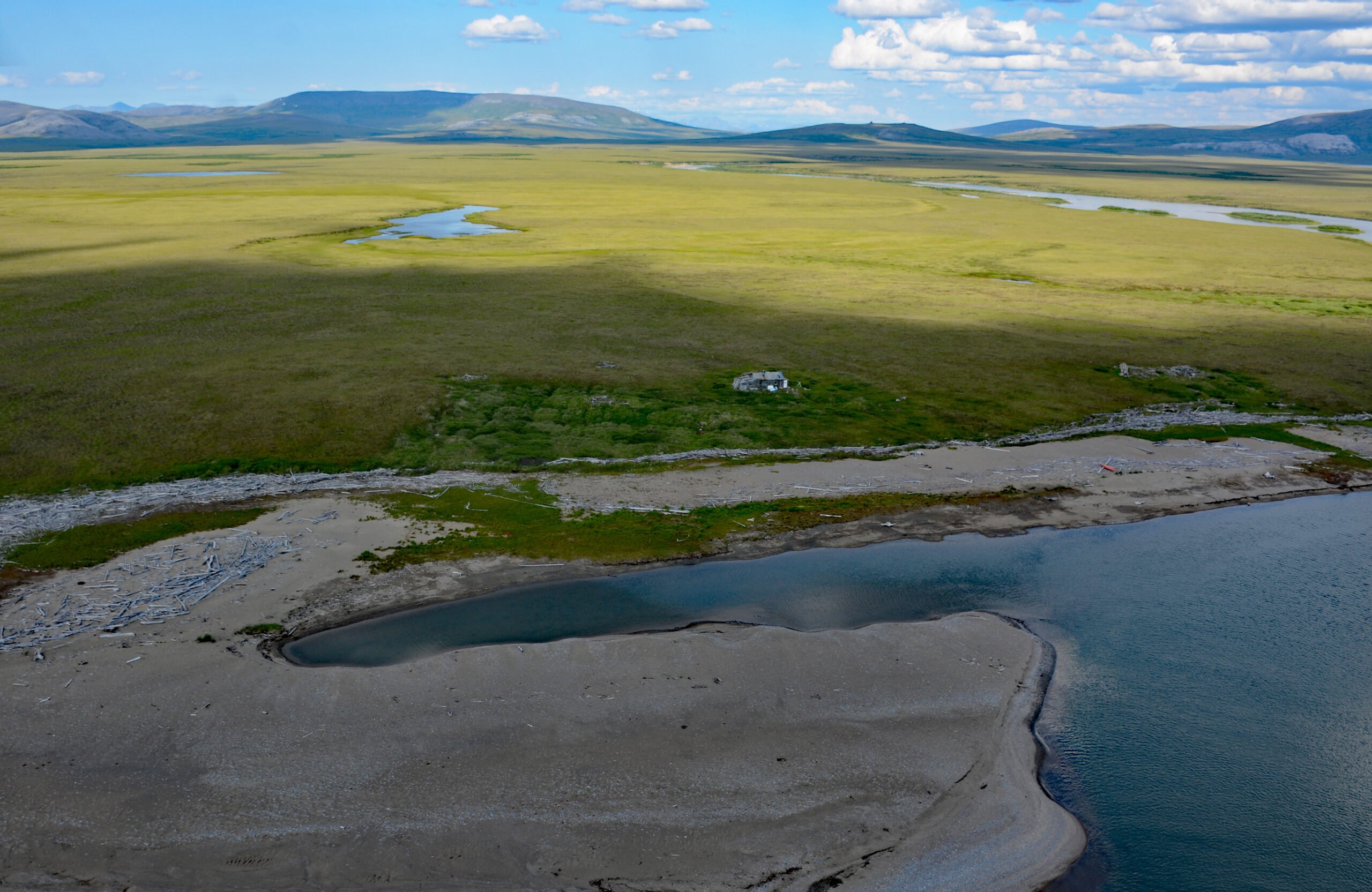Sinuk River starts from a series of deglaciated cirques at an elevation of 1,890 feet (576 m) on the west flank of Tigaraha Mountain on the Seward Peninsula, and flows generally southwest for 44 miles (71 km), draining a watershed of 190,572 acres (77,122 ha), to the Bering Sea near Cape Rodney and the site of a historic village, about 47 miles (76 km) south of Teller and 26 miles (42 km) west-northwest of Nome, Alaska. The river name is from the Iñupiat language and means ‘stream mouth’. Cape Rodney was named in 1778 by Captain James Cook, possibly in honor of his contemporary George Rodney, 1st Baron Rodney, a decorated British Naval Officer. Most of the Sinuk River watershed is underlain by metamorphic rocks consisting of marble and schist that developed between the Devonian and Ordovician periods. Ice of the Nome River glaciation covered the area during the Pleistocene. The present-day topography includes rounded, rubble-covered hills, tundra-covered lower slopes with solifluction lobes, and tundra and muskeg-covered lowlands with few outcrops.
Iñupiat people inhabited the mouth of the Sinuk River from around 500 AD to the 1700s. An archaeological study was conducted in the 1930s by Otto Geist, who excavated an area on the east bank and found evidence of a large, permanent settlement. The site is on a bluff overlooking the Bering Sea, likely chosen for its strategic location for hunting and fishing, and contains the remains of several large, semi-subterranean houses, as well as numerous artifacts such as tools, weapons, and pottery. One of the most significant finds at the Sinuk Village Site was a large cache of ivory carvings, including walrus tusks and whalebone. In 1895, it became the headquarters for a reindeer herd owned by Charlie Antisarlook. In 1903, The Reverend Charles E. Ryberg, pastor of the Congregational Church at Nome, undertook a project to move the Iñupiat population of Nome to Quartz Creek, about 7 miles (11 km) east of Sinuk River, and away from the corrupt influences of gold miners. The colony drew about a hundred people, but collapsed the following year when Ryberg left the peninsula. In 1906, the Bureau of Education established a school at the mouth of Sinuk River to accompany a mission built by the Methodist Church and an existing roadhouse.
Changunak was the daughter of an Iñupiaq woman and a Russian trader, who was raised in Saint Michael during the 1870s when the settlement was a trading post and a popular stop for foreign ships with whalers, Russian traders, rum runners, merchants, and missionaries. She took the name of Mary, and learned English, Russian, and several dialects of the Iñupiat language. Her mother taught her traditional skills, including skin sewing and tanning, fishing, hunting small game, and preserving wild foods. In 1889, she married Charlie Antisarlook and moved to Nome. They met Captain Michael A. Healy, commander of the U.S. Revenue Cutter Bear, and she served as a translator and helped bring the first Siberian reindeer to Alaska. A government reindeer station was established near Teller, and over four years, about 1,300 reindeer came through the area. Charlie apprenticed as a herder and eventually he and Mary were awarded 500 reindeer of their own. The herd was originally based around Sinuk, also known as Sinrock, the small settlement at the mouth of Sinuk River. In 1900, Charlie died from the measles, and Mary, also known as Sinuk Mary or Sinrock Mary, sold reindeer meat to the U.S. Army at Fort Davis near Nome. This reputedly led to her becoming one of the richest women in Alaska. In 1901, Mary relocated to Unalakleet with her family and reindeer and eventually remarried. In 1918, the village of Sinuk was wiped out by the influenza epidemic. Read more here and here. Explore more of Sinuk River and Cape Rodney here:

